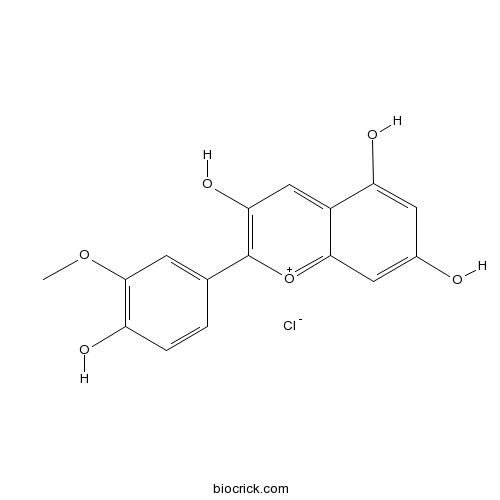InChI=1S/C16H12O6.ClH/c1-21-15-4-8(2-3-11(15)18)16-13(20)7-10-12(19)5-9(17)6-14(10)22-16;/h2-7H,1H3,(H3-,17,18,19,20);1H
Peonidin chloride has antioxidant activity.[1]
Peonidin, a common aglycone form of anthocyanin, can ameliorate the MNU induced photoreceptors degeneration and rectify the abnormities in the inner visual signal pathways.[2]
Peonidin has anti-inflammatory activities, can inhibit phorbol-ester-induced COX-2 expression and transformation in JB6 P+ cells by blocking phosphorylation of ERK-1 and -2.[3]
English website: Peonidin chloride
Japanese website: Peonidin chloride
Chinese website: Peonidin chloride
[1] KS Başkan, E Tütem, E Akyüz, et al. Eur Food Res Technol, 2015, 241(4):529-41.
[2] Tao Y, Chen T, Liu Z, et al. Cell Physiol Biochem, 2016, 38:893-908.
[3] Kwon J Y, Lee K W, Hur H J, et al. Ann NY Acad Sci, 2007, 1095(4):513–20.
[4] Krvavac J, Uzunovic A, Toromanovic J, et al. Planta Med, 2009, 75(09):1062-1062.



